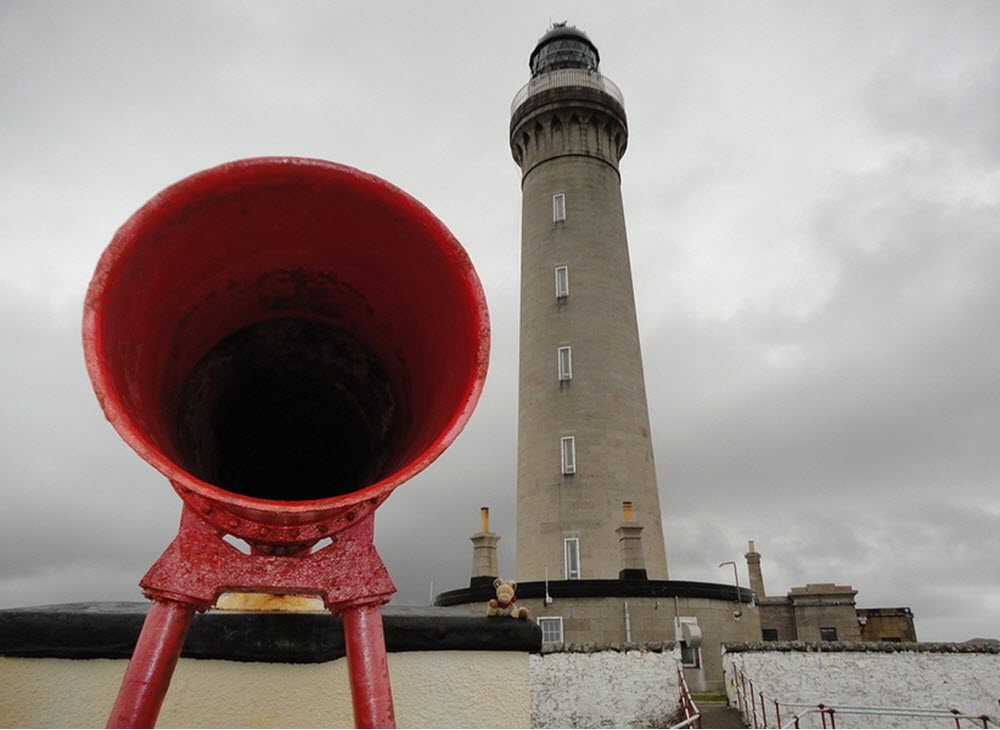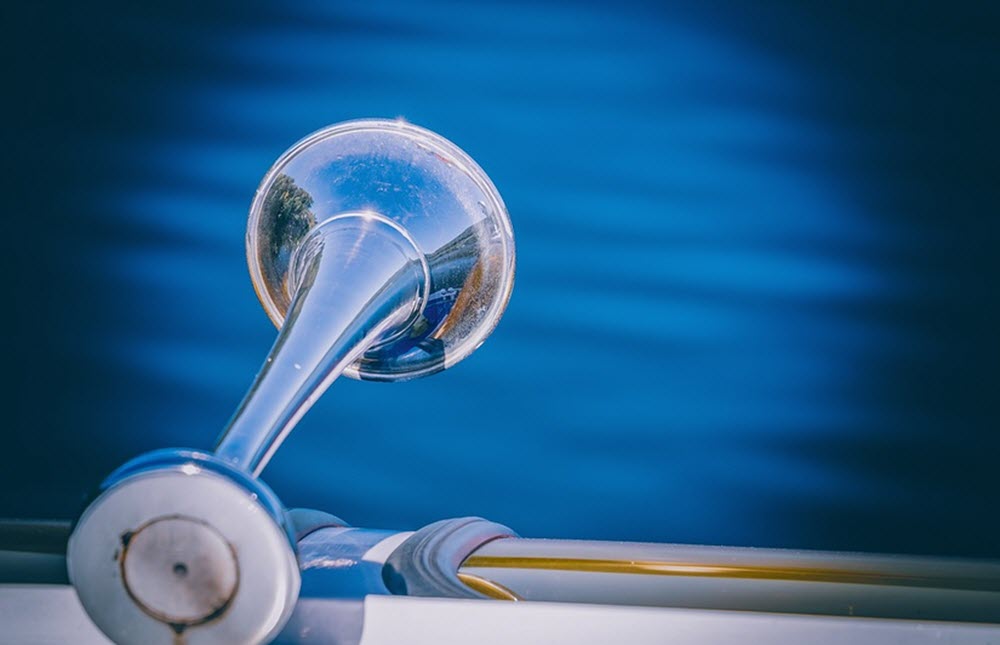Contents
A foghorn emits sound to alert vessels in foggy conditions. Foghorns can, for instance, be used to warn navigators of hazards such as rocky coastlines, rock outcrops, headlands, and shoals. Vessels also use foghorns to alert other vessels of their presence, to avoid collisions.
Traditionally, stationary foghorns were attached to lighthouses and buoys, since such visual navigation aids were rendered rather useless in foggy conditions.

Modern foghorns
As lighthouses were automated during the second half of the 20th century, so were the foghorns. A laser or photo beam can be shot out to sea by a machine, and if the system detects fog (or similarly decreased visibility) the foghorn is activated automatically and starts emitting its sound.
Modern foghorns are usually electrically powered diaphragm or compressed air horns.
Large, long-range foghorns are fairly unusually nowadays since ships and boats have modern tools available that can help them navigate safely through fog.
Underwater foghorns
Foghorns can be placed under water, and water carries their sound farther than the air. Underwater foghorns have been especially common in areas known to be particularly dangerous for ships and boats, and where getting a warning well in advance is of great importance.
The signal emitted by an underwater foghorn will reverberate through the ships hull.
One example of a spot where there used to be an underwater fogwarning in place is the lighthouse White Shoal Light in Lake Michigan, USA. In addition to an above-the-water fog signal, this lighthouse also featured a submersible bell that would toll the number 23 to warn navigators on the lake.
Foghorn history
Bells and gongs are early examples of audible fog signals. At some lighthouses, a small canon was let off periodically to warn vessels. In lighthouses were steam power was available, a steam-whistle could be employed.
Throughout the 1800s, various steps were taken in an effort to decrease the amount of manual work required for the foghorn. Among other things, clockwork systems were constructed for striking bells. One of the first automated fog bells was the Stevens Automatic Bell Striker.
In Britain, the lighthouse authority Trinity House developed the system “Signal, Fog, Mk I” where a nitrocellulose charge was fired electrically, but the charge had to be replaced manually after each signal.
The automated steam-powered foghorn
The automated steam-powered foghorn was invented by the civil engineer Robert Foulis (1796-1866), a Scotsman who had emigrated to New Brunswick, Canada. In 1853, he was walking back to his home on a foggy night, as the sound of his daughter playing the piano reached him. Foulis noticed that he could only hear the lowest notes of the piano, and realized that a foghorn that emitted low frequency sounds would be more efficient than high-pitched whistles and similar. He draw up plans for a low-frequency foghorn, but it would take six years before the New Brunswick lighthouse commissioner finally allowed the engineer T. Vernon Smith install Foulis’ groundbreaking foghorn on Partridge Island. A patent dispute between Foulis and Smith followed, and Foulis never managed to patent his invention.
In addition to the foghorn itself, Foulis also developed a code system for it.

The coal-powered foghorn
The Daboll trumpet is a type of foghorn where the sound is produced by vibrating plates or metal reeds. It was invented by Celadon Leeds Daboll (1818-1866) in Connecticut, USA, based on the principles of the clarinet. The last Daboll trumpets fell out of use in the mid-1900s.
Lord Rayleigh’s trumpet
In England, John William Strutt, 3rd Baron Rayleigh (1842-1919) designed a siren with a large trumpet that achieved exceptionally good sound propagation. It was installed in the Trevose Head Lighthouse in 1913.
Diaphone
The diaphone was invented as an organ stop by the musician Robert Hope-Jones (1859-1914), and developed into a fog signal device by John Northey. A diaphone is powered by compressed air and can emit extremely powerful low-frequency notes.
